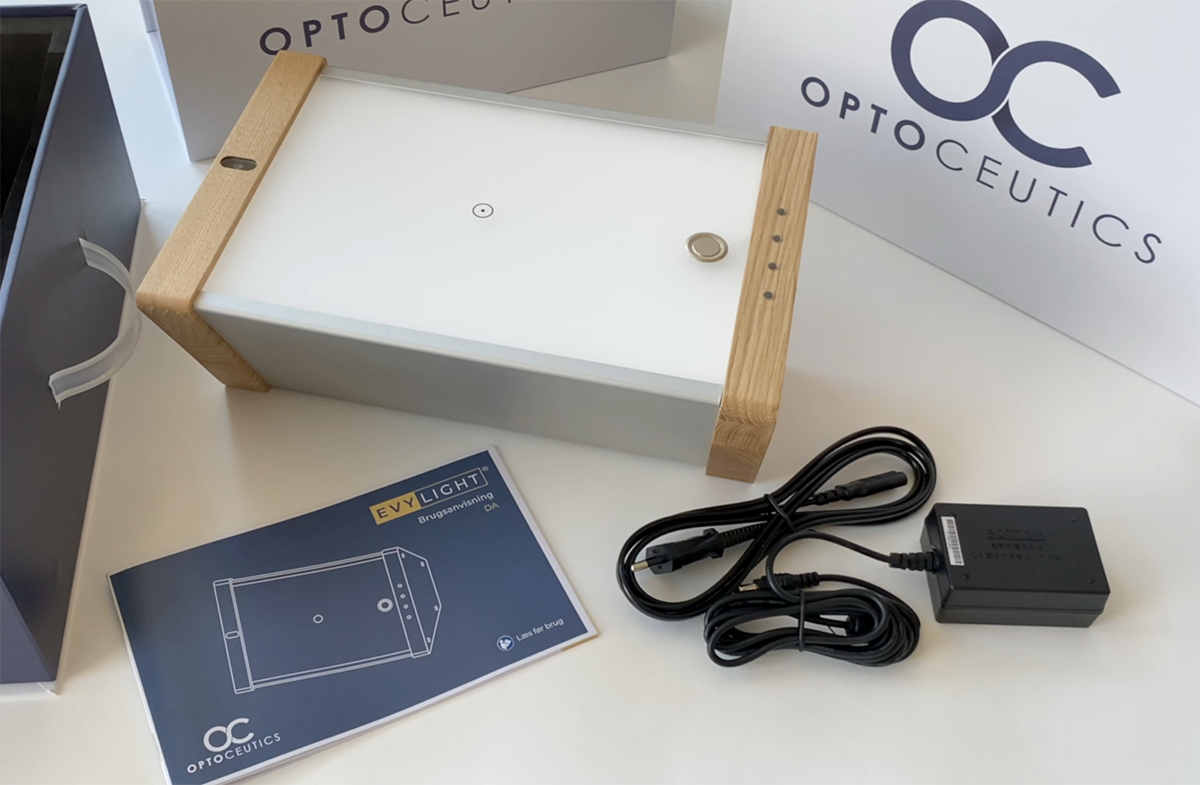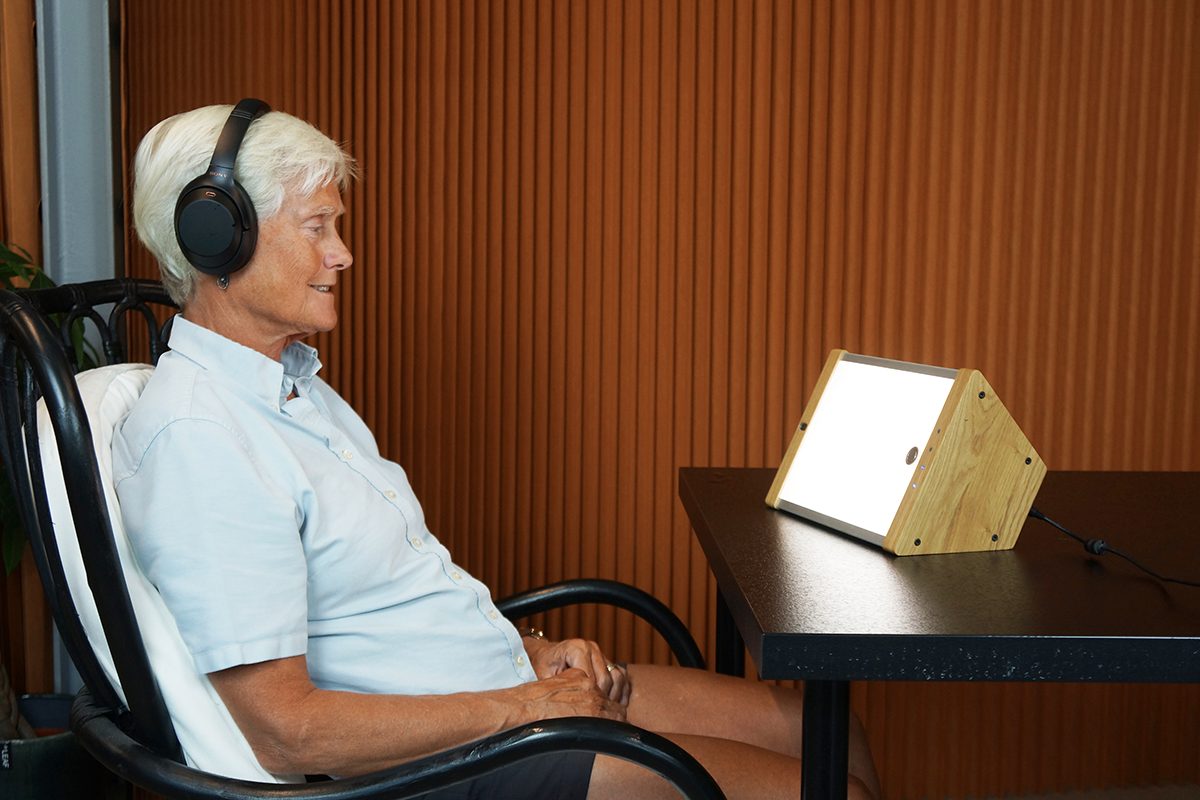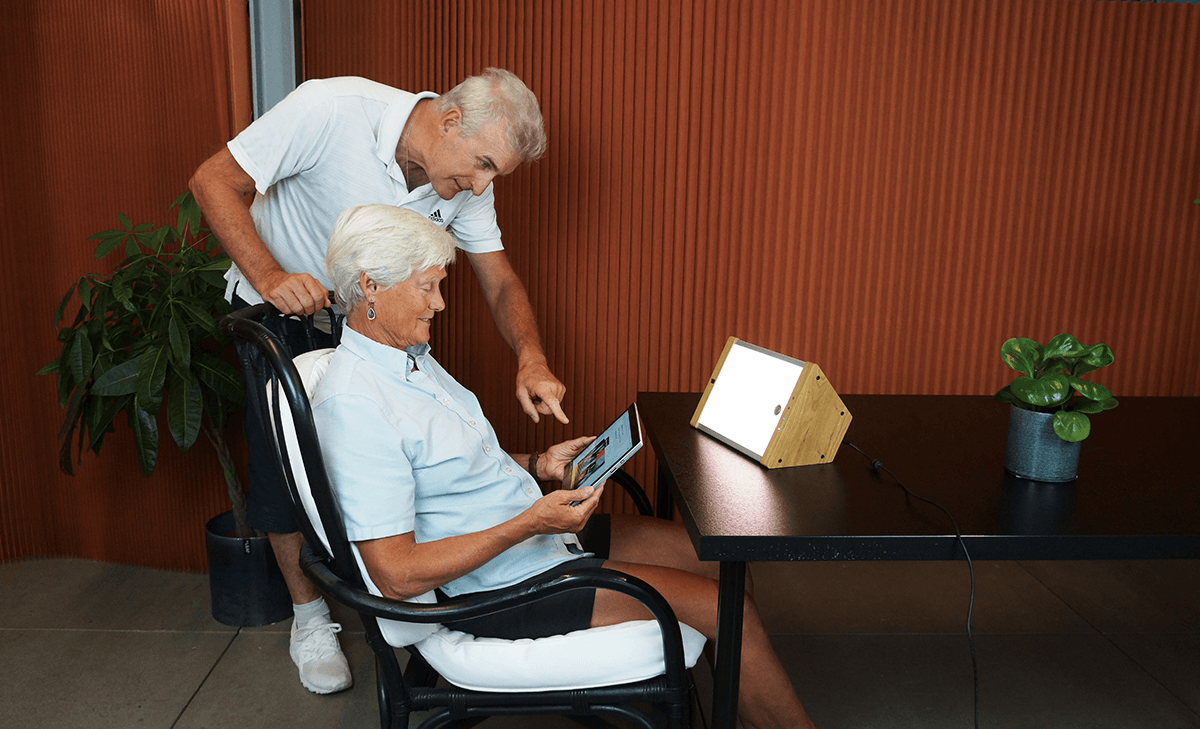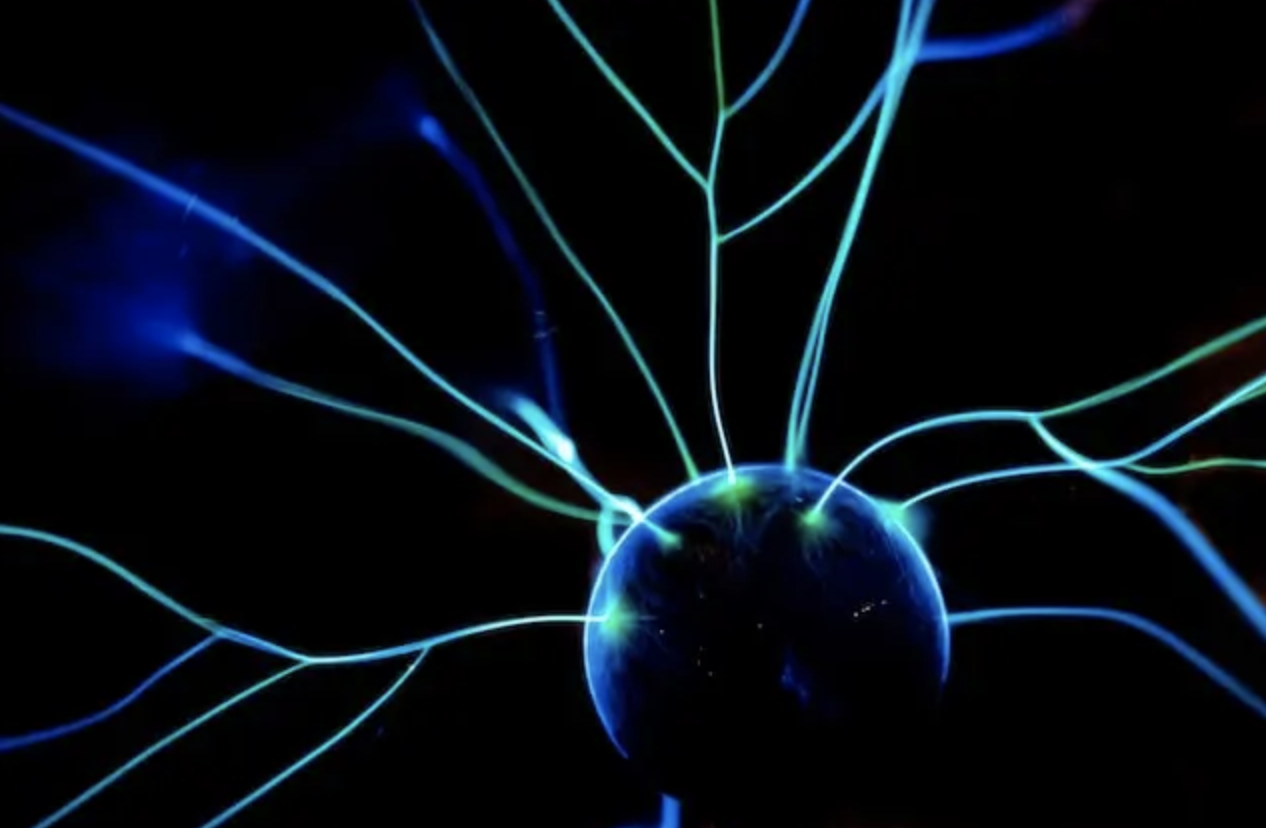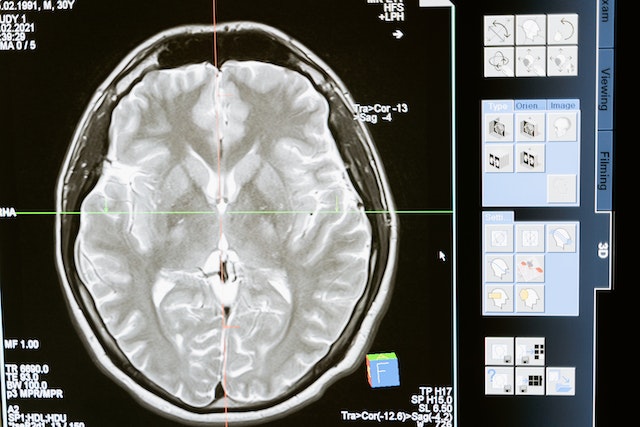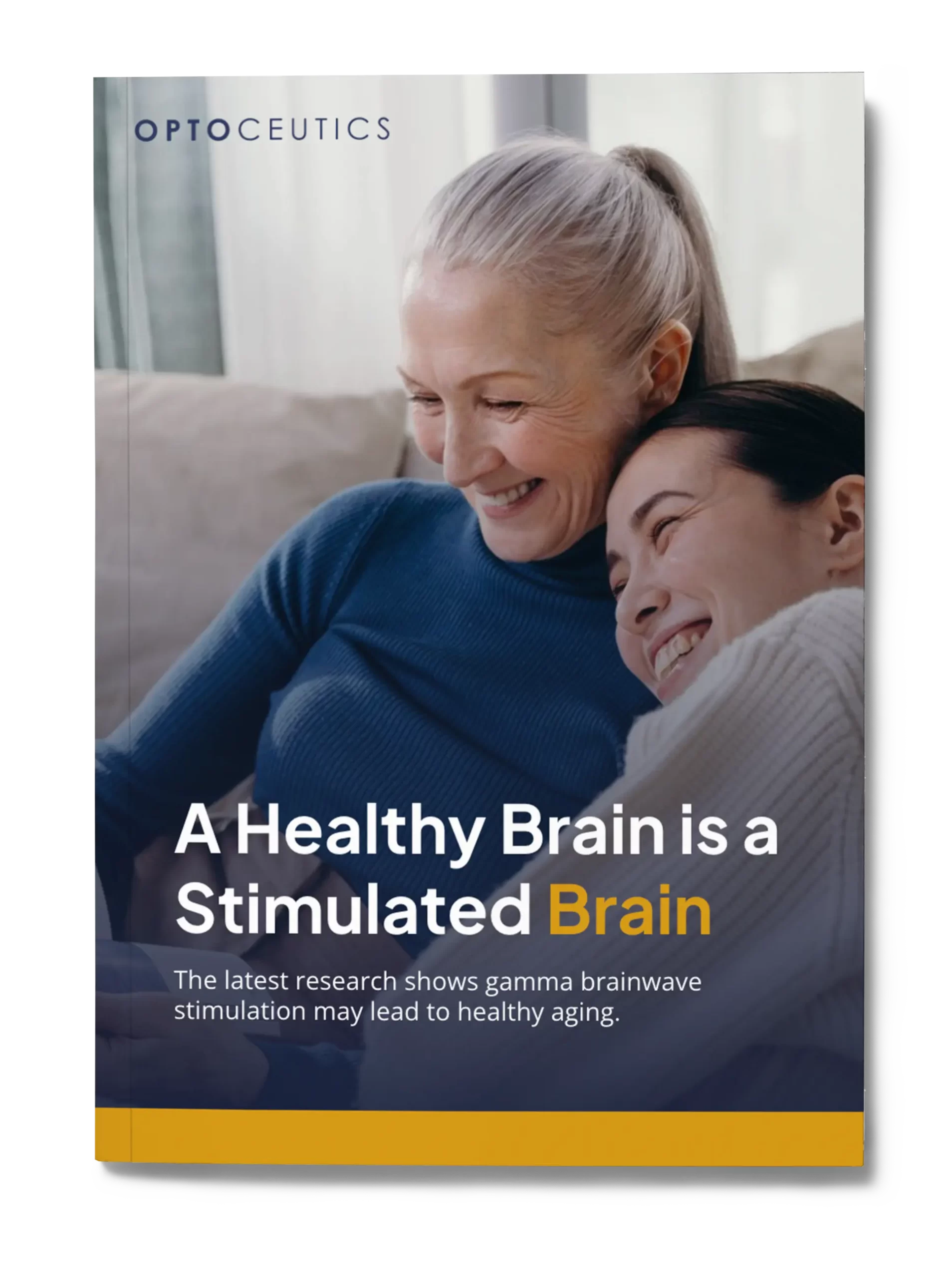Alzheimer’s disease and dementia disease are some of the most prevalent and challenging neurodegenerative disorders in the world, affecting millions of people. The medical community has long been looking for effective treatment options for this ailment, with limited success. Flashing and strobe light therapy is a relatively new discovery that could potentially offer a new tool to help tackle this debilitating condition.
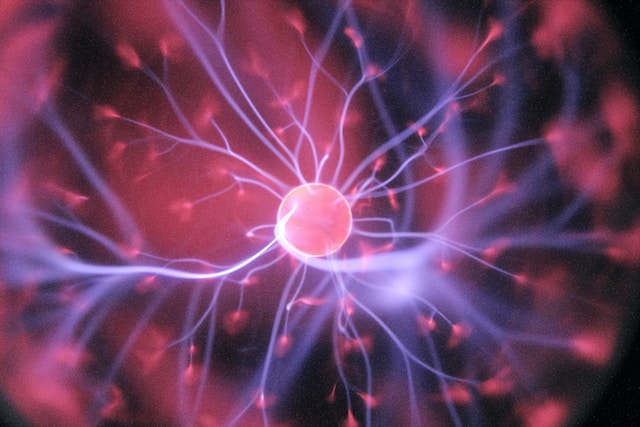
Christopher Ravn
Key Takeaways
1. Alzheimer’s and dementia are two types of neurodegenerative disorders that are becoming more prevalent.
2. Although there is no cure, flashing and strobe light therapy could be a promising alternative treatment for these conditions.
3. By targeting the gamma waves in the brain of Alzheimer’s and dementia patients, this therapy aims to help reset circadian systems and improve cognitive abilities.
4. The research for this therapy is still ongoing, but products such as EVY LIGHT allow for at-home treatment.
Table of Contents
1. What Is Flashing Light Therapy For Alzheimer’s And Dementia And What Are Its Benefits?
2. How Do Flashing Lights Help With Alzheimer’s And Dementia?
3. What Does Flashing And Strobe Light Therapy Look Like?
4. Ongoing Research And Clinical Trials In Flashing And Strobe Light Therapy Treatments For Alzheimer’s And Dementia
5. Effects Of Flashing And Strobe Light Therapy On Brain Functions In Alzheimer’s And Dementia
6. What Is The Best Type Of Flashing And Strobe Light Therapy For Alzheimer’s?
7. What Is The Best Device To Use With Flashing And Strobe Light Therapy For Alzheimer’s And Dementia?
8. How Much Does Flashing And Strobe Light Therapy For Alzheimer’s Cost?
9. Can Flashing And Strobe Light Therapy Be Detrimental If You Have Alzheimer’s?
10. Does Flashing And Strobe Light Therapy Help With Sundowner’s Syndrome?
What Is Flashing Light Therapy For Alzheimer’s And Dementia And What Are Its Benefits?
Flashing and strobe light therapy for Alzheimer’s and dementia is a relatively new discovery that uses pulses of light to stimulate brain activity. Although the research is ongoing, this type of therapy looks to use a simple strobe effect to counter many of the symptoms associated with Alzheimer’s and dementia.
There are a few notable benefits that this type of therapy offers when compared to traditional treatments. When it comes to Alzheimer’s treatment, flashing lights don’t require any form of medication and it appears as though there are no significant side effects when using this treatment. What’s more, the flashing and strobe light therapy for Alzheimer’s appears to help improve cognitive abilities in people with this condition. It is also believed to help with things like improving sleep and mood stabilization.
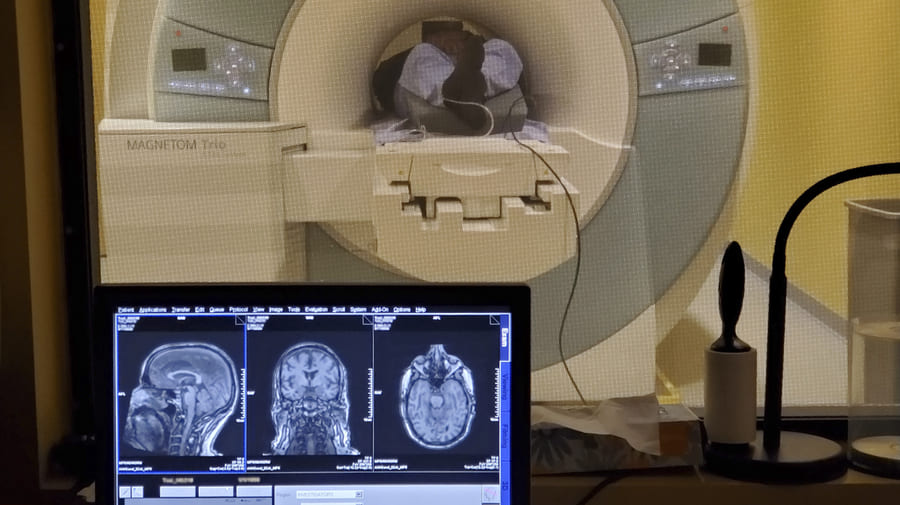
Can Flashing And Strobe Light Therapy Help With Alzheimer’s?
All of the current research into Alzheimer’s flashing light therapy points to this treatment being a viable option for people with Alzheimer’s disease. Although more work will need to be done, the tentative results from clinical trials at MIT point to marked improvements in cognitive function in participants with Alzheimer’s disease and dementia.
Other Treatments Vs Flashing And Strobe Light Therapy For Alzheimer’s
The current roster of treatments available for Alzheimer’s offers marginal benefits for Alzheimer’s patients at certain stages of the illness. For example, drugs like Galantamine are only suitable for patients with mild to moderate Alzheimer’s. In contrast, flashing and strobe light therapy offers tangible benefits for all stages of the disease. It also offers a non-invasive, drug-free alternative treatment that seems to provide a number of benefits that range from enhanced mood to improved memory.
How Do Flashing Lights Help With Alzheimer’s And Dementia?
One of the core parts of flashing and strobe light therapy for Alzheimer’s is the ability to set the pulse frequency for the light.. By setting a frequency of 40Hz, the light frequency can alter the gamma waves in the brain. People with Alzheimer’s and dementia have disrupted gamma waves, which leads to many of the symptoms associated with the condition.
By utilizing the 40Hz frequency, flashing and strobe light therapy for Alzheimer’s appears to provide a number of benefits. These include things like improved memory retention, enhanced moods and a less disrupted sleep pattern in people with Alzheimer’s and dementia.
Latest Findings From Small Studies
Although still in its early stages, there have been significant findings from clinical trials looking into flashing light therapy for dementia and Alzheimer’s. They have shown that this form of treatment could offer an alternative pathway for Alzheimer’s and dementia patients. Tentative results show this therapy could help slow the development of amyloid proteins in the brain, slow or stop the death of neurons and help protect existing neural connections.
These potential outcomes could offer a safe, drug-free and non-invasive treatment plan that works on its own or as a complementary treatment. Participants in these trials showed increased brain activity, memory recall and diminished symptoms of dementia or Alzheimer’s.
How Flashing And Strobe Light Therapy Affects Cells In The Brain
Flashing and strobe light therapy appears to have profound effects on how certain cells in the brain function. These changes, it seems, are why light therapy could hold so much potential in the treatment of Alzheimer’s disease and dementia. Some of the cellular effects that were studied in clinical trials include:
- Neuroprotection: The neurons in the brain appeared to be strengthened and in some cases new neuron growth (neurogenesis) was observed following strobe light treatment.
- Mitochondrial Enhancement: Mitochondrial cells provide energy to the brain. Under strobe light therapy, more of these cells were switched on, giving the brain access to more energy.
- Gamma Wave Synchronization: Flashing and strobe light therapy utilizes 40Hz pulses to boost gamma wave rhythms and bring them into synchronization. This can enhance higher cognitive function and lessen the cognitive decline in people with Alzheimer’s or dementia.
- Reactive Oxygen Species Modulation: ROS modulation helps to promote new cell growth in regions of the brain. Flashing and strobe light therapy seems to enhance this process.
So although much of the research surrounding this therapy is ongoing, the results appear to be quite unified. The cellular effects noted above explain why participants enjoyed increased blood flow to the brain, a more balanced brain metabolism and improved stress response.
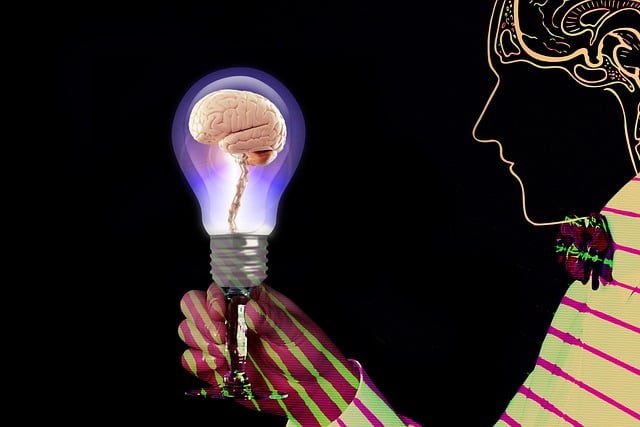
What Does Flashing And Strobe Light Therapy Look Like?
The beauty of flashing and strobe light therapy lies in its simplicity. In essence, the treatment involves sitting relatively still while a flashing light is cast over your face. It doesn’t require any medication, is totally non-invasive and has no known significant side effects. By simply allowing a certain frequency of light to be cast over you, your brain wave patterns are synchronized to the right frequency of 40Hz.
There are two routes of treatment for flashing and strobe light therapy – clinical settings and at-home devices. Opting for a clinical setting makes the treatment a little bit more involved and can be expensive. You’ll also need to travel to the clinic daily for sessions, which is a considerable time investment.
Alternatively, home devices offer an affordable option and give you the freedom to perform the treatment in the comfort of your own home. Here is how it works:
- Simple Setup: To begin, place the flashing and strobe light on a flat surface at a distance of about 2 feet from you.
- Cast the Light: Next, get comfortable and switch on the light. You don’t have to interact with the device beyond this – and don’t look directly at the light!
- Daily Use: To get the best results, it’s recommended that you perform the flashing and strobe light therapy once per day.
- Leave it Alone: During the treatment, you don’t have to do anything other than let the light cast over you. You can sit back, relax and wait for the treatment to run its course.
What Is The Best Device To Use With Flashing And Strobe Light Therapy For Alzheimer’s?
If you want to get the best results from using flashing and strobe light therapy for Alzheimer’s, then you need to get the right type of device. The research around this treatment focuses on using light pulses at 40Hz – or 40 pulses per second – to synchronize brain waves. This is the most important thing to look for when considering the best device.
The other consideration is whether or not to use basic stroboscopic lights or Invisible Spectral Flicker (ISF). Most most people struggle with the effect of stroboscopic and claim it causes nausea and headaches. As a result, they are unable to use the device for the recommended period of time and dont get the full benefit. OptoCeutics has developed the patented Invisible Spectral Flicker (ISF) technology which offers all of the benefits associated with light therapy – but limits the potential side effects.
Ongoing Research And Clinical Trials In Flashing And Strobe Light Therapy Treatments For Alzheimer’s And Dementia
There are several studies that have built a foundation for ongoing research into flashing and strobe light therapy treatments for Alzheimer’s and dementia, such as this one from 2019 or this more recent study in 2021. There is also the work of OptoCeutics researchers, which The most recent studies from 2022 had to be paused due to COVID-19, but the team are confident that their work will press forward in the coming months. The current body of research is just the start – with researchers at the Massachusetts Institute of Technology (MIT) looking to study this treatment with high-risk Alzheimer’s patients.
The promise behind much of this work is further enhanced with larger clinical studies, such as the long-term trials being undertaken by the National Institute for Health. With any hope, these ongoing bodies of research will yield more promising results around the treatment of dementia and Alzheimer’s using light therapy.
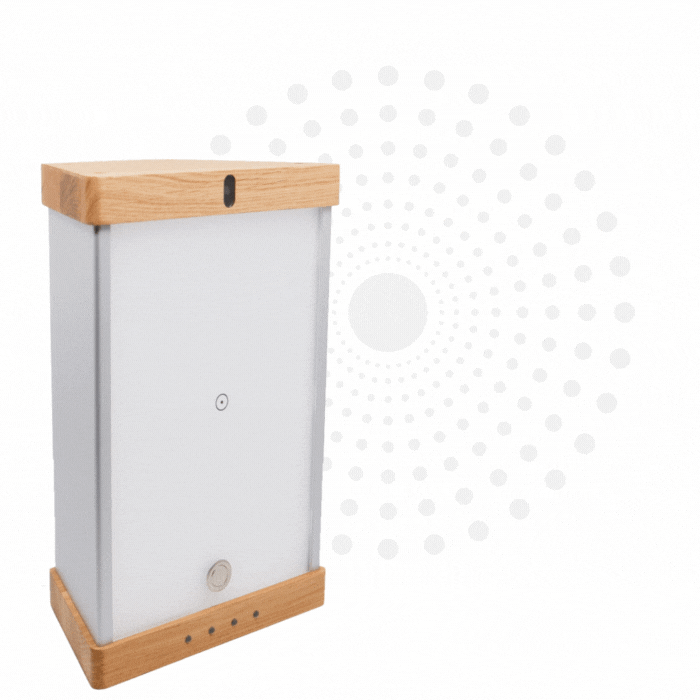
Enhance your brain performance through the power of light.
Comfortable and easy to use 40Hz light therapy to support and improve your brain function.
View Our LightEffects Of Flashing And Strobe Light Therapy On Brain Functions In Alzheimer’s And Dementia
The initial findings from the clinical trials and research into flashing and strobe light therapy highlight that it is a non-invasive procedure with no significant side effects. More than that, though, it offers tangible benefits for Alzheimer’s and dementia patients by improving cognition and brain functionality. It appears to do this in a few different ways, such as:
- Lower Amyloid Plaque Levels: Increased amyloid plaques are key indicators that the brain is in the advanced stages of Alzheimer’s or dementia. It seems that flashing and strobe light therapy can lower their volume in the brain, essentially slowing the progression of Alzheimer’s or dementia.
- Neuroprotective Qualities: This form of treatment also appears to protect the neurons in the brain and even facilitate the creation of new neurons, making the brain more functional.
- Mood Stabilization: Another hallmark sign of Alzheimer’s and dementia is a disturbed mood, such as depression. Strobe and flashing light therapy for Alzheimer’s can help stabilize these disturbances and improve the overall mood of patients.
- Enhanced Memory: Memory loss and confusion are common symptoms of Alzheimer’s and dementia. This therapy could slow or even reverse these symptoms, offering more mental clarity for patients.
Effect Of Flashing And Strobe Light Therapy On Disturbed Behaviors
One of the bigger revelations surrounding the various studies into flashing and strobe light therapy for Alzheimer’s is how it impacts disturbed behaviors. These behaviors, which include things like depression, anxiety of disturbed sleep patterns, are very common as the disease progresses. Flashing and strobe light therapy appears to help counter many of these disturbed behaviors without any noticeable side effects.
As a result of treatment, participants were noted as having a better sleep routine, improved moods and even enhanced memory recall. When looking at these results as a whole, the quality of life of individuals with Alzheimer’s disease and dementia is much better than before the treatment.
The Circadian System In Alzheimer’s Disease
We rely on our circadian system to provide our bodies with an internal clock. It lets us know when we’re tired and when we’re well-rested. When our circadian system doesn’t work as it should – such as when people develop dementia or Alzheimer’s disease – our sleep patterns become disrupted. A lack of sleep can cause mood swings and other behavioral issues that can be difficult to handle. Flashing and strobe light therapy looks to address issues with circadian systems, which in turn helps regulate sleep patterns and improves mood.
What Is The Best Type Of Flashing And Strobe Light Therapy For Alzheimer’s?
Flashing and strobe light therapy treatments rely on using a light that pulses at 40Hz, so you’ll need to find a suitable device that can provide this. Stroboscopic light is the most commonly available, but it has a few notable drawbacks. It isn’t suitable for everyone, as the strobe effect can cause a number of side effects including headaches, nausea, dizziness and even epileptic seizures.
We Believe Prioritizing Brain Health Enhances Your Quality Of Life
Get to know our team, our mission and how our EVY LIGHT® can provide you and your loved ones with a fuller life, letting you breathe a little easier.
What Is The Best Device To Use With Flashing And Strobe Light Therapy For Alzheimer’s And Dementia?
Although research is still currently ongoing around flashing and strobe light therapy, at-home technology for this treatment is available. The best devices will allow for 40Hz light pulses and will be thoroughly tested before reaching the market. EVY LIGHT®, an innovative brain health enhancer, stimulates gamma wave activity non-invasively, potentially aiding those with age-related cognitive challenges, all within the serenity of your home environment.

How Much Does Flashing And Strobe Light Therapy For Alzheimer’s Cost?
How much you pay for flashing and strobe light therapy for Alzheimer’s or dementia will depend on where you get your treatment. Opting for a clinical setting, such as a hospital, could cause the price of this treatment to rise dramatically. Some hospitals may include this therapy as part of their treatment plan, but if your insurer doesn’t cover the costs then it will be expensive.
Alternatively, using an at-home device, such as the EVY LIGHT® for treatment in your own home is a cost-effective option. You don’t have to attend clinics or fight over costs with insurers with this option. So if you want to try out flashing and strobe light therapy for yourself, this is arguably the best solution.
Can Flashing And Strobe Light Therapy Be Detrimental If You Have Alzheimer’s?
The research and clinical studies that have looked at flashing and strobe light therapy has pointed to it being a safe procedure with minimal side effects. With that said, there are certain individuals who should consult with a medical professional before trying out this treatment. These conditions include:
- Eye diseases such as retinal disease.
- Skin conditions such as dermatitis.
- Behavioral issues such as bipolar disorder.
- Light sensitivity or migraines.
View The Video Testimonials Of What Others Have Experienced
See how others have achieved a sharper mind by activating their gamma brainwaves in combination with maintaining a healthy lifestyle.
Does Flashing And Strobe Light Therapy Help With Sundowner’s Syndrome?
Sundowner’s syndrome, also known as sundowning, is a condition that is associated with Alzheimer’s disease and dementia. It defines a marked increase in symptoms in the late afternoon and evening, so things like memory loss are heightened later in the day.
Flashing and strobe light therapy can potentially help counter the effects of sundowning by targeting gamma brain waves. Although a lot of the research surrounding this process is still ongoing, the results show a lot of promise.


